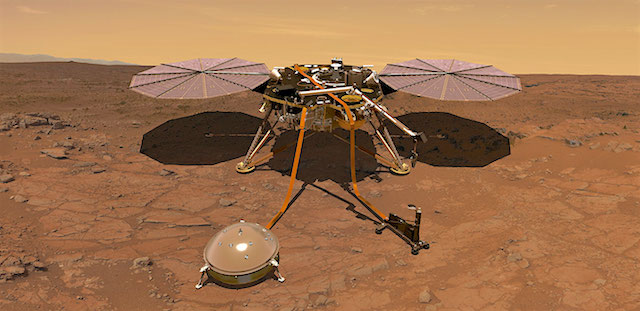 NASA’s Mars InSight lander team is preparing to ship the spacecraft from Lockheed Martin Space in Denver, where it was built and tested, to Vandenberg Air Force Base in California, where it will become the first interplanetary mission to launch from the West Coast. The project is led by NASA’s Jet Propulsion Laboratory in Pasadena, California.
NASA’s Mars InSight lander team is preparing to ship the spacecraft from Lockheed Martin Space in Denver, where it was built and tested, to Vandenberg Air Force Base in California, where it will become the first interplanetary mission to launch from the West Coast. The project is led by NASA’s Jet Propulsion Laboratory in Pasadena, California.
NASA has a long and successful track record at Mars. Since 1965, it has flown by, orbited, landed and roved across the surface of the Red Planet. What can InSight — planned for launch in May — do that hasn’t been done before?
1. InSight is the first mission to study the deep interior of Mars.
A dictionary definition of “insight” is to see the inner nature of something. InSight (Interior Exploration using Seismic Investigations, Geodesy and Heat Transport) will do just that. InSight will take the “vital signs” of Mars: its pulse (seismology), temperature (heat flow), and its reflexes (radio science). It will be the first thorough check-up since the planet formed 4.5 billion years ago.
2. InSight will teach us about planets like our own.
InSight’s team hopes that by studying the deep interior of Mars, we can learn how other rocky planets form. Earth and Mars were molded from the same primordial stuff more than 4 billion years ago, but then became quite different. Why didn’t they share the same fate?
When it comes to rocky planets, we’ve only studied one in great detail: Earth. By comparing Earth’s interior to that of Mars, InSight’s team hopes to better understand our solar system. What they learn might even aid the search for Earth-like exoplanets, narrowing down which ones might be able to support life. So while InSight is a Mars mission, it’s also more than a Mars mission… [More at link]








